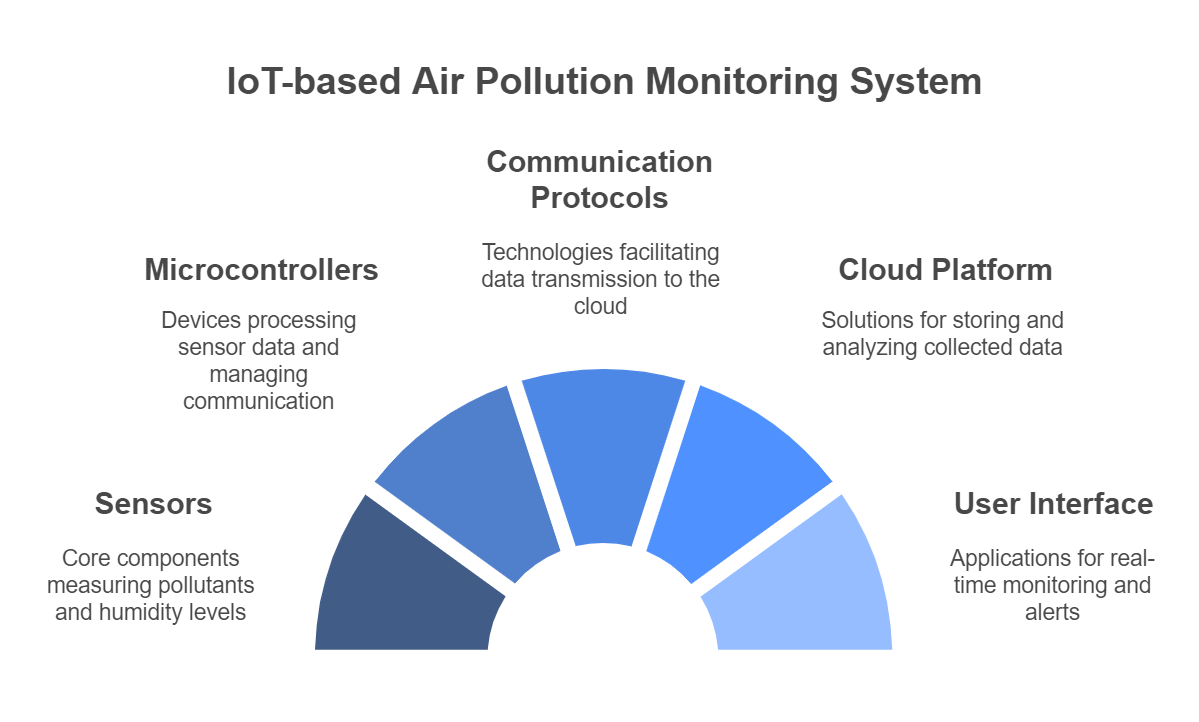Iot Based Indoor Air Pollution Monitoring
2025-03-29
In recent years, the importance of monitoring indoor air quality has gained significant attention due to its impact on health and well-being. This document explores advanced Internet of Things (IoT) solutions for indoor air pollution monitoring, highlighting the technologies, methodologies, and benefits of implementing such systems. By leveraging IoT devices, we can achieve real-time data collection and analysis, enabling proactive measures to improve indoor air quality.
Introduction
Indoor air pollution is a critical issue that can lead to various health problems, including respiratory diseases, allergies, and other chronic conditions. Traditional methods of monitoring air quality often involve manual sampling and laboratory analysis, which can be time-consuming and inefficient. The advent of IoT technology has revolutionized this field by providing a framework for continuous monitoring and immediate feedback.

IoT Architecture for Air Quality Monitoring
An effective IoT-based air pollution monitoring system typically consists of the following components:
Sensors: These are the core of the system, measuring various pollutants such as particulate matter (PM2.5, PM10), carbon dioxide (CO2), volatile organic compounds (VOCs), and humidity levels. Microcontrollers: Devices like Arduino or Raspberry Pi can be used to process sensor data and manage communication with the cloud. Communication Protocols: Technologies such as MQTT, HTTP, or CoAP facilitate data transmission from sensors to cloud servers. Cloud Platform: A cloud-based solution stores and analyzes the data collected from sensors, providing insights and visualizations. User Interface: Mobile applications or web dashboards allow users to monitor air quality in real-time and receive alerts when pollution levels exceed safe thresholds.
Implementation Methodology
Step 1: Sensor Selection
Choosing the right sensors is crucial for accurate monitoring. Considerations include sensitivity, range, and calibration requirements. Popular sensors for indoor air quality include:
-
MQ Series: For detecting gases like CO2 and VOCs.
-
DHT Series: For measuring temperature and humidity.
-
Plantower PMS Series: For particulate matter detection.
Step 2: Data Collection and Transmission
Once sensors are deployed, data is collected at regular intervals. The microcontroller processes this data and sends it to the cloud using the chosen communication protocol.
Step 3: Data Analysis
Cloud platforms can utilize machine learning algorithms to analyze the data, identify patterns, and predict pollution levels. This analysis can help in understanding the sources of pollution and the effectiveness of mitigation strategies.
Step 4: User Notification
Users can be notified through alerts on their mobile devices or web applications when air quality deteriorates, enabling them to take immediate action, such as improving ventilation or using air purifiers.
Benefits of IoT-Based Monitoring
-
Real-Time Monitoring: Continuous data collection allows for immediate awareness of air quality changes.
-
Data-Driven Decisions: Analysis of historical data can inform strategies for improving indoor air quality.
-
Cost-Effective: Automated systems reduce the need for manual monitoring and can be scaled easily.
-
User Engagement: Providing users with real-time data fosters awareness and encourages proactive measures.
Conclusion
The integration of IoT technology in indoor air pollution monitoring presents a transformative approach to ensuring healthier living environments. By implementing advanced monitoring systems, we can not only track air quality in real-time but also empower individuals and organizations to take informed actions to mitigate pollution. As technology continues to evolve, the potential for smarter, more efficient air quality management will only increase, leading to improved health outcomes and enhanced quality of life.